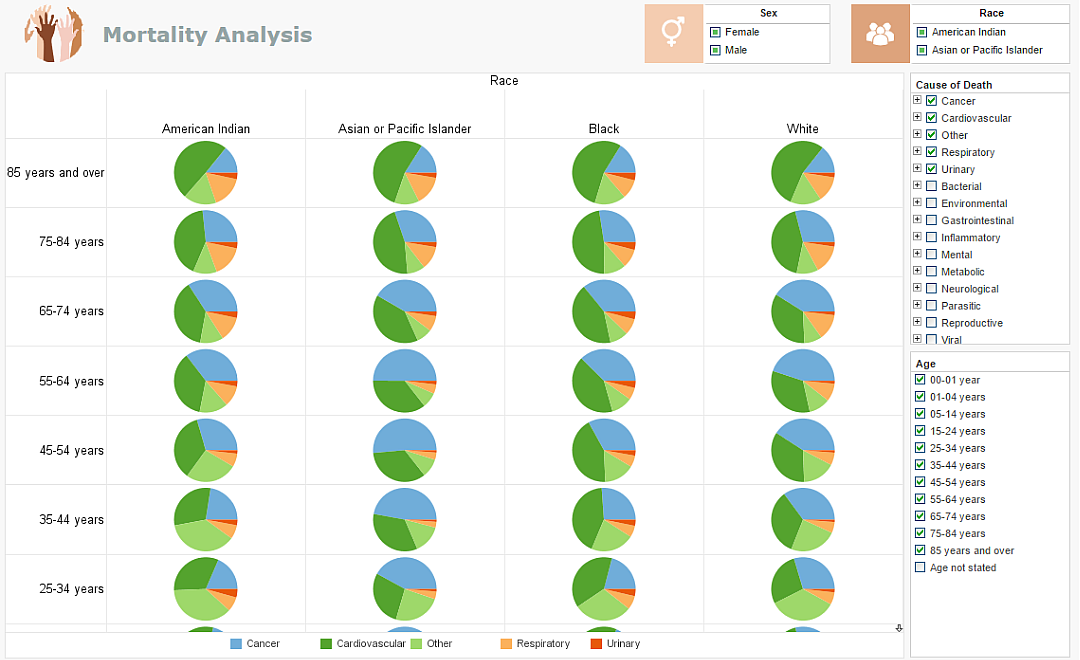InetSoft Webinar: Data Monitoring Side of the Equation
This is the continuation of the transcript of the DM Radio show "Avoiding Bottlenecks and Hurdles in Data Delivery." InetSoft's Principal Technologist, Byron Igoe, joined industry analysts and other data management software vendors for a discussion about current issues and solutions for information management.
Eric Kavanagh: Well, and yeah and you know, caching obviously is an old trick as well, but I think one of the keys with being able to use caching effectively is to know which datasets are useful, which datasets are valuable. You got to have that whole data monitoring side of the equation to see who is using which datasets, and when I say using, I mean not just actually receiving them and opening reports and so on and so forth, but then actually making decisions based on them.
Because I have to think that you know if you are not focusing on the business value that someone is getting from these data feeds, you are going to be in trouble, and if you do focus on that in and of itself, that process can help you avoid bottlenecks by recognizing that Bob over in accounting really isn’t using this feed, but Jim over there in the senior executive’s office, he is on the stuff all the time so may be let’s find a way to cache certain pieces of data for him since he and his team use it a lot, and that really requires that monitoring side of the equation, right?
 |
View a 2-minute demonstration of InetSoft's easy, agile, and robust BI software. |
Ian Pestel: Well yes that’s really a good point, and naturally yeah the monitoring can actually be through a process. So for example we have one customer, a big pharmaceutical company, and they have to provide data to the business intelligence community, people from a variety of sources. And one of the problems they were encountering was that they were trying to provide data out there, and there was a need to provide it very quickly. But also when they provided it, often there were problems where the data people were looking at had gone away.
So I want to ask you now a different question. Often they were depending a great deal of time on using very traditional data warehousing techniques just to make data available for the business. So what we do now is they actually use data virtualization, and they can deliver the data very, very quickly to the business.
Then they can monitor it, and actually then check the data services that are being used, are actually being used as the business intended and to the amount of the business requested. And once they have monitored that quickly, as it was actually three months, they then start to then look at actually putting value to the bigger enterprise data landscape. So in some way that’s going through a triage process about what data was being used and who is using it and when its being used. Data virtualization gives you that capability to do that process very, very quickly and also, as you say, to monitor it through an accomplished process.
Eric Kavanagh: Yeah, good stuff, good stuff. So what are some of the other mega trends that you have seen? Speaking to what Philip was talking about earlier, are there any? I mean he is talking about the need for more real time data. I am guessing that you are seeing that kind of thing, right?
Ian Pestel: Yeah, absolutely, and I think he goes down to the points that I think as we made earlier is in the terms of, I think, as he comes down to decision making, I think people want to see the information much more quickly in order to be able to make decisions much more quickly. And we have businesses time scales shrinking all the time because they need to be responsive to new demands and to be so means having information almost in a real time manner.
And I think the operation of reporting is great, and I think that big businesses are being divided, and I think it's now becoming more and more critical, and that’s is going to happen. And then with old and new sources of information, a little bit of becoming available for enterprise, the mining especially, social media for example, you get more information to all. All the customer information, the incoming data is just going to increase. Doing more and more in the workplace, and again it is real time data. It has to be mined, and it has to be processed and has to be integrated. Yeah, more is online because it's changing so quickly. So 24 hours is simply not good enough. The need to bring more responsiveness to the data integration is usually required.
 |
Read why choosing InetSoft's cloud-flexible BI provides advantages over other BI options. |
| Previous: The Virtual Data Warehouse Approach |
Next: Deliver Real Time Data
|

